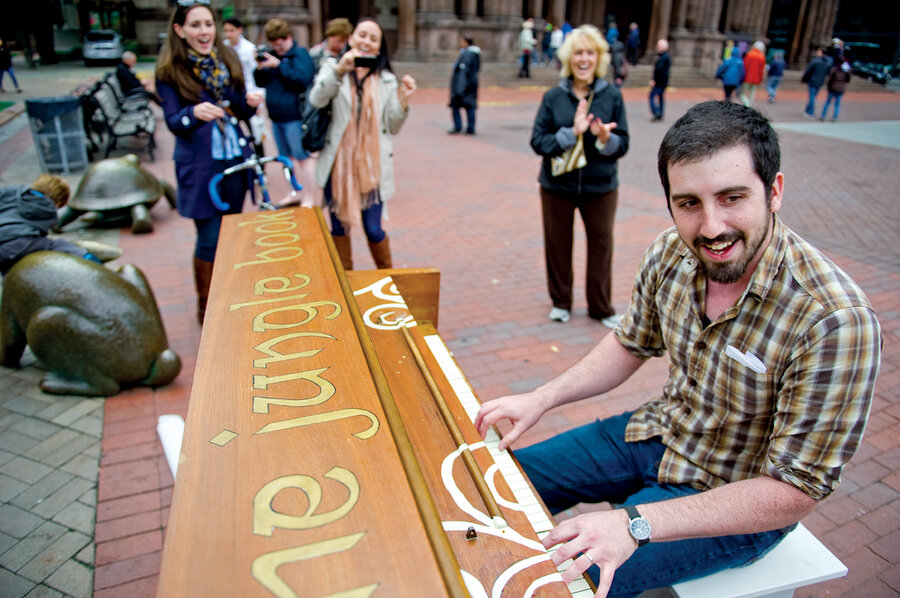Let me play you a melody
Loading...
The crowd looks on expectantly as a young woman in a sheer black blouse steps up to the piano. “It’s a little out of tune,” Filiz Cagla, a classically trained musician from Bursa, Turkey, tells her audience halfway through her rendition of “Take Five.”
But no one seems to have noticed. After all, there are honking cars, chatting pedestrians, and children screeching for their parents’ attention on this small concrete island in the heart of Harvard Square in Cambridge, Mass. The brown piano Ms. Cagla has taken over is painted with white stripes, polka dots, and ducks. It’s part of the public art project “Play Me, I’m Yours”; some 75 decorated pianos have been installed across Boston and its environs this fall.
Artist Luke Jerram came up with the project in 2008 in Birmingham, England, and since then has brought more than 1,000 pianos to 37 locations worldwide.
“[It] provides a blank canvas for the public ... to share their creativity with each other,” Mr. Jerram says, calling the installation the “democratization of art.” “[Art] doesn’t need to be in a gallery or opera house,” he says by phone from London.
“Play Me, I’m Yours” is sponsored by the Celebrity Series of Boston, but coincided with the city’s first celebration of ArtWeek, launched by the Citi Performing Arts Center.
“Public art is coming into a new realm,” says Sue Dahling Sullivan, chief strategic officer for the center. “People want to see creativity and art everywhere they go.” ArtWeek Boston is loosely based on the model of restaurant week, and aims to make art accessible to all. Nearly three dozen art projects and performances filled public and private spaces across the city.
From the now-familiar painted cows and decorated hearts that have spread through cities across the globe, Jerram says public art is becoming “part of the visual cavalry of contemporary art.” With arts budgets often the first to get slashed when money is tight, it’s an easy way to reach thousands of people. “It demands attention,” he says.
Austin Klipp and Ben Johnson, belting out “Brown Eyed Girl” at a piano in the Harvard Yard agree. “It gives the city a magical feel,” says Mr. Johnson, who brought along his guitar to accompany Mr. Klipp on the piano.
Klipp has played every day since the 2-1/2 week project began. He takes requests from passersby and enjoys hearing others play, too: Little kids bang out “Chopsticks” and unassuming older men play classics with breathtaking skill. “There’s a spontaneous feel to it,” Klipp says. “It’s part of the spirit, and it brings people together.”








